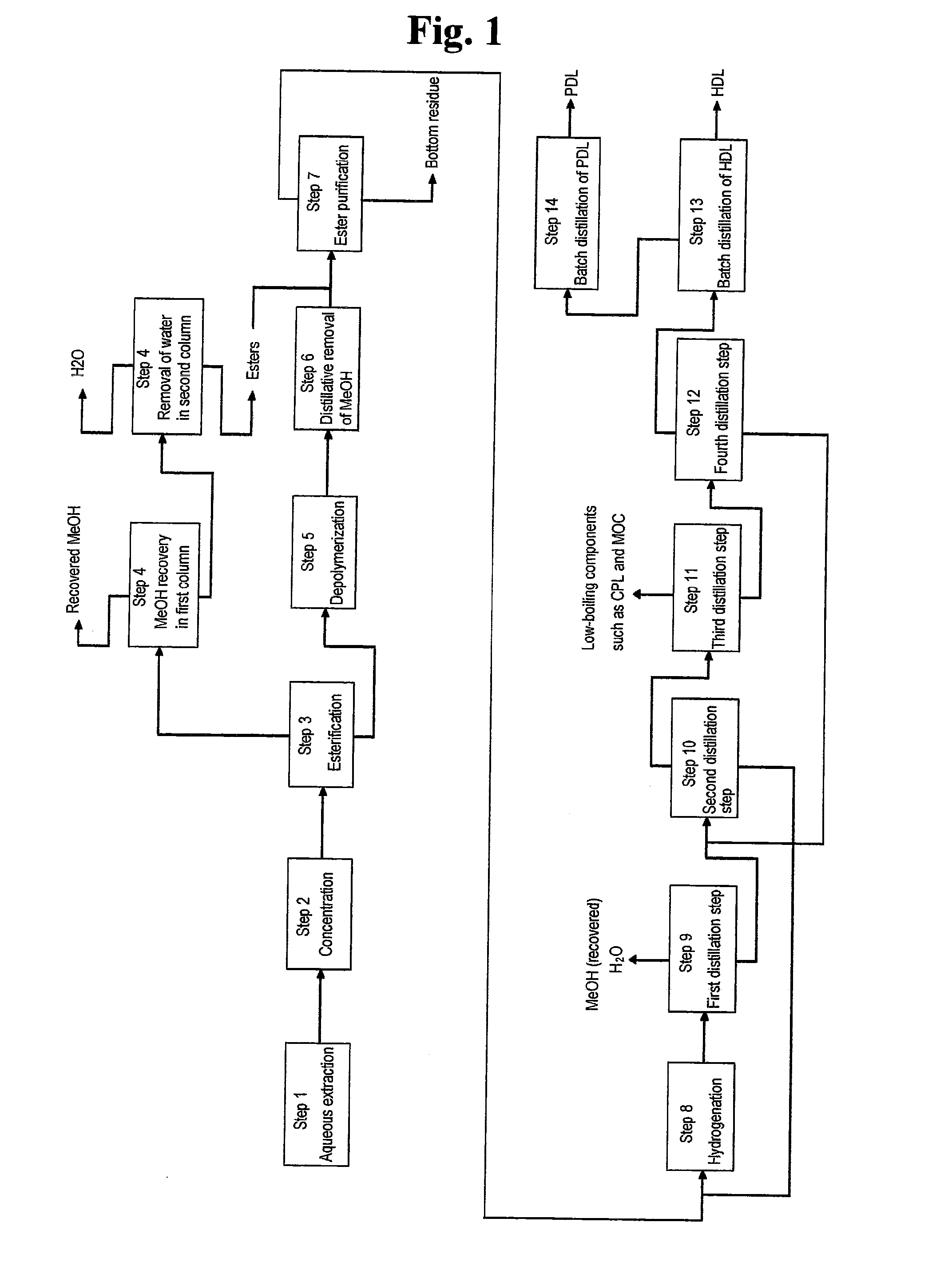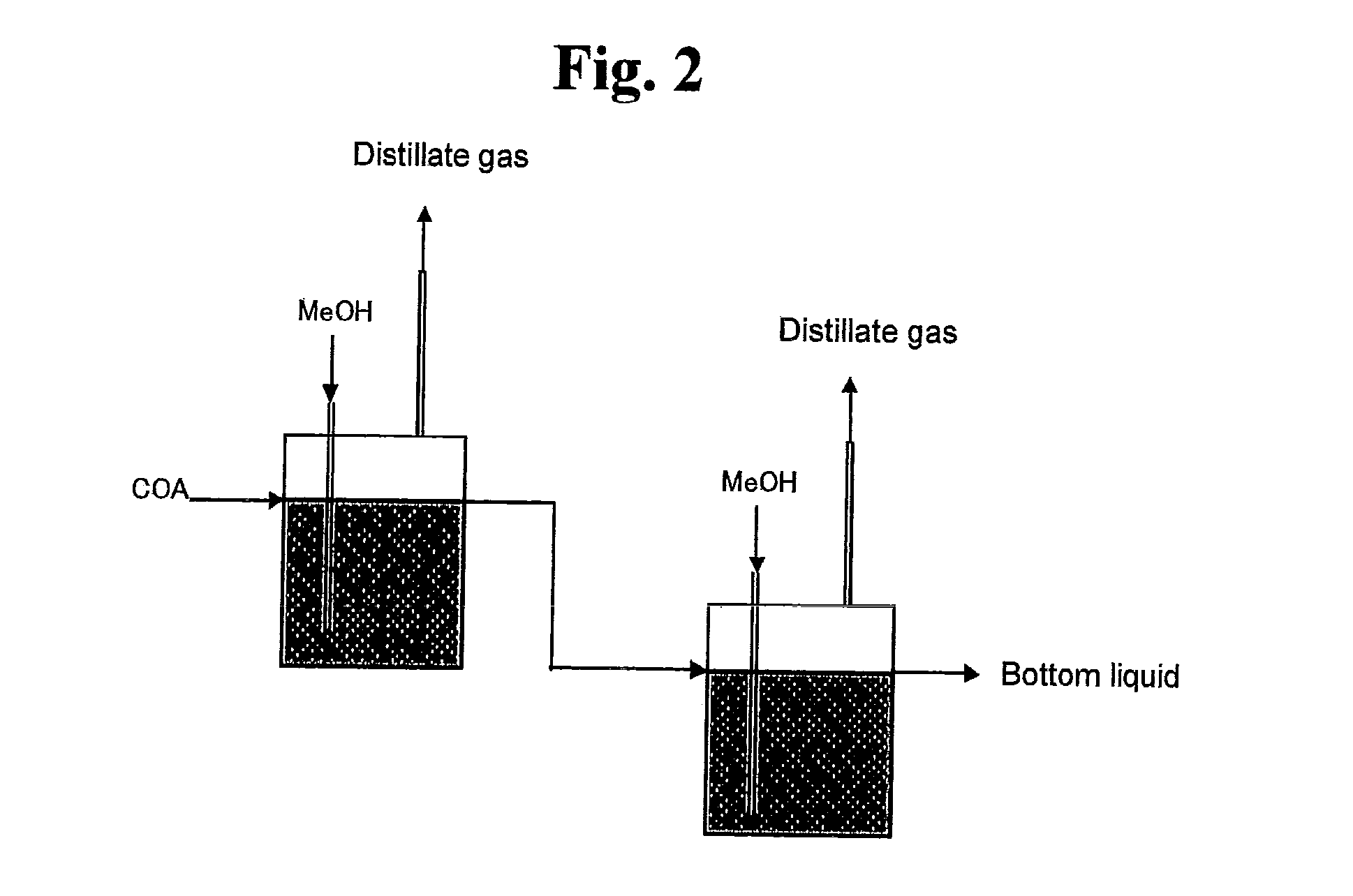High purity 1,6-hexanediol and process for preparing the same
a technology of hexanediol and high purity, applied in the field of high purity 1, 6hexanediol and a process for preparing the same, can solve the problems of high ester value (ev), low polymerization rate, and insufficient molecular weight, and achieves easy removal, high purity, and easy separation.
- Summary
- Abstract
- Description
- Claims
- Application Information
AI Technical Summary
Benefits of technology
Problems solved by technology
Method used
Image
Examples
example 1
[0114]Step 1: Oxidation of Cyclohexane and Extraction with Water
[0115]Cyclohexane was oxidized with molecular oxygen in the presence of a cobalt catalyst (cobalt octylate) under the conditions of 160° C. and 1 MPa, followed by extraction with water under the conditions of 160° C. and 1 MPa to obtain a carboxylic acid mixture (aqueous extract) having the following composition.[0116]Aqueous extract of cyclohexane oxide[0117](Composition of aqueous extract)[0118]Valerie acid: 0.1 wt %[0119]5-Hydroxyvaleric acid: 0.11 wt %[0120]Caproic acid: 0.02 wt %[0121]Succinic acid: 0.3 wt %[0122]5-Hydroxycaproic acid: 3.8 wt %[0123]Glutaric acid: 0.3 wt %[0124]Adipic acid: 2.4 wt %[0125]1,2-Cyclohexanediol: 0.02 wt %[0126]1,4-Cyclohexanediol: 0.04 wt %[0127]Others: Water and trace components
Step 2: Concentration of Aqueous Extract
[0128]Then, the extract was concentrated under the condition of 13 KPa to obtain a concentrate having the following composition.
(Composition)
[0129]6-Hydroxycaproic acid: ...
PUM
| Property | Measurement | Unit |
|---|---|---|
| Mass | aaaaa | aaaaa |
| Boiling point | aaaaa | aaaaa |
Abstract
Description
Claims
Application Information
 Login to View More
Login to View More - R&D
- Intellectual Property
- Life Sciences
- Materials
- Tech Scout
- Unparalleled Data Quality
- Higher Quality Content
- 60% Fewer Hallucinations
Browse by: Latest US Patents, China's latest patents, Technical Efficacy Thesaurus, Application Domain, Technology Topic, Popular Technical Reports.
© 2025 PatSnap. All rights reserved.Legal|Privacy policy|Modern Slavery Act Transparency Statement|Sitemap|About US| Contact US: help@patsnap.com


